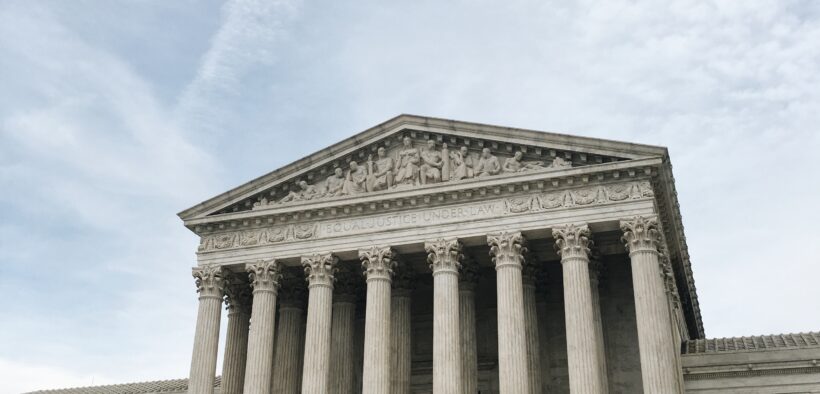Gun Violence in America: The Future of Gun Rights and the Second Amendment
Share

Image Credits: @aesullivan2010 on Unsplash (Unsplash License)
The United States’ gun laws have ceased to protect citizens, leading to higher rates of gun violence and gun-related deaths. As the country with the highest rates of gun violence across all developed nations, the United States’ negligent and lax gun laws have led to an unacceptable number of gun-related injuries. Since the COVID-19 pandemic, gun violence rates have been at an all-time high, motivating debate around the Second Amendment – posing questions about stricter gun regulation laws. The demand for regulation is critical in today’s culture where gun regulation laws are slim and often allow for easy accessibility for violent individuals. The weapons shooters possess exhibit a threat to all Americans. The future of gun rights will depend on elected officials and demands from citizens who urge gun regulation is necessary and imperative for the safety of millions of Americans.
In the Bill of Rights, the Second Amendment states, “the right of the people to keep and bear Arms, shall not be infringed.” Initially, the Second Amendment was thought only to protect the rights of individuals participating in their state militias, which meant not allowing citizens to “keep and bear Arms” in their own homes. Only in the 20th Century did judges begin to interpret the “self-defense” aspect of the Second Amendment as protected. Often, those who valued gun control supported the self-defense condition and it became a prevalent part of American culture. This was widely accepted and celebrated by the American public who deeply valued freedom and protested against gun control. The purpose of the Second Amendment was to provide a “well-trained and regulated” militia that could protect the nation against federal tyranny and distribute power equally across the people, states, and the federal government. After the American Revolution when fears of a tyrannical government existed after breaking free from an undemocratic British rule, gun rights were a priority and viewed as a necessary element to be included in a new Constitution. Historically, guns are perceived to be symbols of power, freedom, democracy, and the prospect of independence within self-governance exempt from a dictatorship rule. Although these traits are positive and in theory a nice thought, in any society, guns and freedom cannot coexist. A weapon that can kill and create death can never be used as an excuse for freedom or liberty.
Understanding the complex history of the Second Amendment and the documented relation between Americans and gun rights is important to understand why the proposition of gun regulation in the United States is so debated and contested. In the 2010 case Mcdonald v. Chicago, Supreme Court Justices ruled, “…the Fourteenth Amendment makes the Second Amendment right to keep and bear arms for the purpose of self-defense applicable to the states.” This ruling signified that Chicago’s ban on handguns, shotguns, and rifles was overturned with the Supreme Court declaring it unconstitutional. Therefore, the decision guaranteed that the right to bear arms applies to state and local governments, not only the federal government. This was a landmark decision that established gun protection rights as a part of the Second Amendment officially. Today, this remains to be a crucial decision that makes the passing of gun regulation laws in local and state governments difficult.
Since 2010, gun violence rates across the country have increased dramatically. In fact, there were, “45,222 total gun deaths in 2020, which demonstrates a 14% increase from the year before, a 25% increase from five years earlier and a 43% increase from a decade prior.” In the years following 2010, there has not been a landmark Supreme Court ruling that has addressed these substantial growing statistics. With mass shootings’ unfortunate presence in society, and hence gaining more media coverage, the need for reform and stricter gun regulation is imminent.
Mass shootings are an epidemic – and must be treated as one, especially with school shootings in 2020-21 rising to the highest numbers in two decades. Donna St. George of the Washington Post notes this staggering change, “There were 93 incidents with casualties at public and private schools in 2020-21, compared to 23 in the 2000-01 school year. The record year included 43 incidents with deaths and 50 with injuries only.” Recent examples of these tragic events include; Oxford High School in Michigan, another horrifying school shooting that has taken more lives of children. Ethan Crumbley, a 15-year-old who shot four students and wounded seven others, pleaded guilty to charges against him earlier this year. Since the Oxford school shooting, “more than 70 shootings have taken place at schools across the country.” Because of ease of accessibility, places of learning such as schools and universities have become high-risk environments posing a safety threat to students and Americans. The most recent shooting that occurred just over two and a half hours from the nation’s capital was at the University of Virginia, where three football players were shot and killed and two others were wounded by student Charles Darnell Jones Jr. after a school trip to Washington, DC. Shootings like the Oxford high school and University of Virginia’s happen all over the country in all different jurisdictions. The data and evidence around gun-related deaths in the United States are astonishing and represent an epidemic in American society that must be treated. Because of this, it is imperative that the Supreme Court overturns court cases like Mcdonald v. Chicago or District of Columbia v. Heller or reviews a new case that effectively evaluates and determines the constitutionality of gun laws and establishes federal gun regulations.
Despite the travesties of gun violence, organizations such as the National Rifle Association oppose gun control regulation. The NRA’s resistance to reform has resulted in countless gun-related deaths across the United States. The NRA’s main goal is to protect the cherished Second Amendment and intercept any efforts that threaten it. Yet, gun control advocates make it clear that appealing Second Amendment rights are not the ultimate goal as doing so would be unrealistic and further isolate political parties. Instead, establishing gun regulation and protecting US citizens against gun violence is the prime objective. Engaging gun owners in conversations for reform is an important step to creating change and mobility for gun regulation laws. The involvement of engaging citizens is an important part of creating gun regulation laws. Therefore, elections are a huge part of implementing gun control. Electing people who accurately represent and advocate for fair gun regulations will support and establish a safer and more secure nation.
Compared to other countries, gun laws in the United States allow for easy access to and obtention of guns which connects to the increasing rates of gun violence. Congress has debated implementing gun regulation laws and changing existing ones, especially after high-profile killings like the 2017 Las Vegas Shooting that resulted in over 60 deaths. The U.S. Gun Policy in their Global Comparisons report assessed the current laws implemented, “As of mid-2022, there were no federal laws banning semi-automatic assault weapons, military-style .50 caliber rifles, handguns, or large-capacity magazines. There was also no federal requirement for those purchasing a gun to have any firearm safety training.” The lack of federal requirements has contributed to gun violence and stricter legislation is needed. Solutions involve implementing prevention-based strategies such as background checks, reducing easy access to dangerous weapons, mandatory safety training, required licensing, and supporting gun violence research.
The Bipartisan Safer Communities Act of 2022 signed by President Biden is a great step in the right direction. The passing of the Act enacted, “…an enhanced background check process and up to three-business-day investigative period for buyers under age 21, supports state red flag laws and funds crisis intervention services, disarms domestic abusers, and clarifies who must run background checks. It establishes the first-ever federal laws against interstate gun trafficking and straw purchasing to stop the flow of illegal guns into cities.” These new gun safety laws are essential for creating a safer country for American citizens. With the Act being bipartisan, it affirms that in order for gun reform to be successful, negotiations and compromises must be made by both sides. Supporters of the act have championed its, “funding for state crisis intervention orders, protections for victims of domestic violence, clarified definition of ‘federally licensed firearms dealer’, violence interruption funding, ‘under 21’ enhanced review process, and other aspects”. The act is a great step in the right direction and actively reduces the risks of gun violence. Those who opposed the act argued it was too restrictive and breached the constitutionality of American citizens’ rights. Up until the act’s passing, previous legislation was thwarted by Republicans and others who oppose gun regulation. Inevitably, support for the act by both Republicans and Democrats led to its passing as the looming threat of gun violence united parties. Today, many different organizations are advocating for reform and creating change in communities across the nation such as The Coalition to Stop Gun Violence, the Brady Campaign to Prevent Gun Violence, Everytown for Gun Safety, Gun Free Kids, and many others.
In America, the historic patriotism expressed towards guns and their symbols of freedom makes change difficult. Coupled with strict and unwavering gun protection laws, adjusting or appealing gun laws is a difficult process in itself. If America’s history of gun rights and the slow progression of regulation makes anything clear, it’s that change takes time. Yet, with the countless preventable deaths taken across the country due to gun violence, new and revolutionary policies are needed now. Reform is pivotable to make the United States a safer place for all to live. Therefore, the future of the Second Amendment will be determined by those elected and the continued advocacy of citizens and organizations of the United States for gun control.


Want to get involved?
Connect with us! Connect with us!